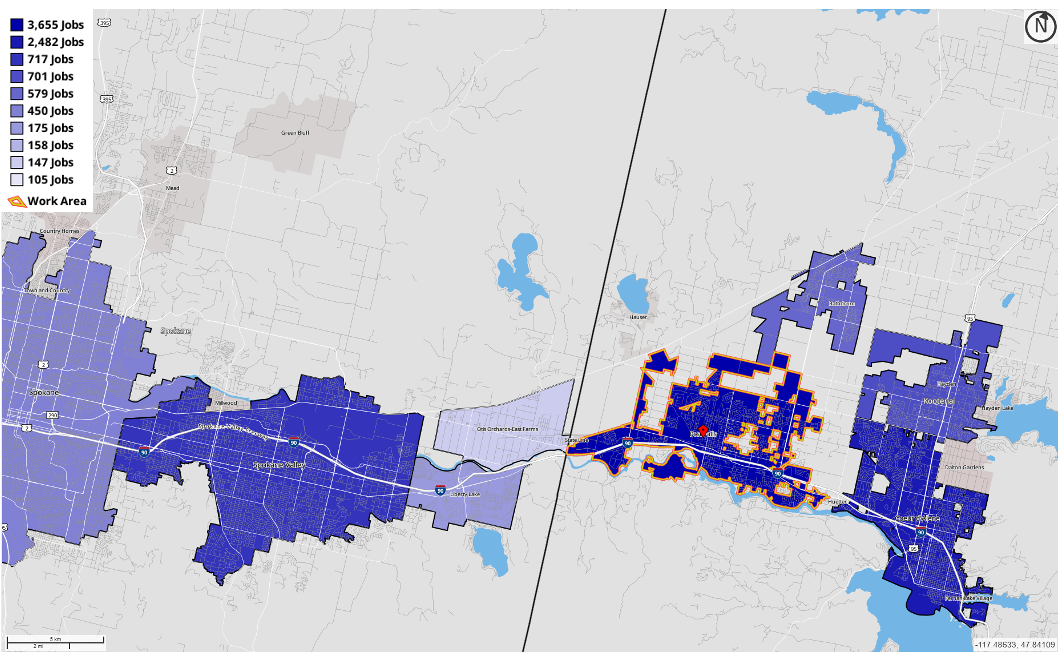
Post Falls 2045: Planning Today for Tomorrow
Did you know?
Originally established as a mill town, downtown Post Falls saw its last operational timber mill close in 2020. Today, this former mill site is being transformed into Millworx—a mixed-use development featuring townhomes, multi-family residences, and commercial storefronts.
The City has around 500 acres of Forests and 10 miles of hiking and mountain biking trails.
The population of Post Falls is projected to double from the current estimated population of 48,303 in 2025 to 105,838 in 2045, according to projections by the Kootenai Metropolitan Planning Organization (KMPO) and local permitting data, which, if realized, would make it the largest city in North Idaho, outpacing Coeur d'Alene by approximately 15,000 in 20 years.
Residents of Post Falls tend to travel out of the city for work, with 79.3% of the workforce commuting to jobs outside of town. Many who work in Post Falls may struggle to find attainable housing given the comparatively low salaries and types of jobs available compared to other areas, including within Spokane County, WA.
The most prominent industries in terms of the number of jobs held by Post Falls residents are:
Health Care and Social Assistance - 2,890 jobs (16.4%)
Retail Trade - 2,442 (13.8%)
Accommodation and Food Services - 1,711 (9.7%)
Manufacturing - 1,660 (9.4%)
Construction - 1,595 (9.0%)
Of all housing types within the 83854 zip code covering the City of Post Falls, detached single-family units are the most prevalent, accounting for 69.4% of the existing housing stock. Multi-family homes comprise 17.18% of the housing stock within the same area (as of 2022 Census data).
Post Falls Commute Patterns (Source: US Census, On the Map, 2022)
Post Falls Population Projection (Source: KMPO & local permit data)
Housing Types within the Post Falls Area (Source: ESRI)



